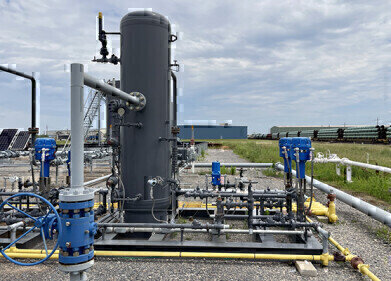Air Clean Up
What's the Most Low-Pollution Public Transport?
Jun 27 2020
If the coronavirus pandemic has taught us one thing about the environment, it’s that remarkable gains in air quality can be made in a surprisingly short window of time. With much of the British population confined to their homes, fewer people have been commuting to and from their workplace. That means fewer cars on the road and less toxic emissions emanating from their tailpipes.
However, those gains will be short-lived unless we can take this opportunity to effect a real change in our attitudes towards the daily commute. Walking and cycling should be automatic choices for short distances, but those who live further away from their place of work must be afforded the opportunity to travel via some form of public transport. But which form of it is best for the environment?
The electric revolution
In recent years, there has been a growing trend of moving towards electric vehicles (EVs), both for private individuals and public entities. London currently has a fleet of 200 electric buses, for example, which is the largest of its kind in the whole of Europe. What’s more, there are plans for 78 electric double-deckers to enter service in 2020, increasing the sustainability of public transport in the capital.
Another forward-thinking method of public transport actually involves looking to the past. At one point in our history, there were tram networks in almost every town and city in the UK, but today, there are only a handful of surviving systems in operation. Given that trams involve no tailpipe emissions whatsoever, they are being viewed by many local councils as an ideal method of improving air quality and reducing transport-related pollution going forwards.
Burnt rubber
One significant advantage which trams boast over buses is the fact that they do not run on rubber tyres. That means that when a tram brakes, they are powered electrically and only involve steel pressing against steel, so there is no resulting friction and no dust is produced. Buses, by contrast, involve brake pads pressing against rubber, producing a significant amount of contamination. Even the very act of running a tyre along tarmac causes its surface to become damaged and lose tread, contributing to non-exhaust emissions.
That effect is not to be underestimated. According to the Department for the Environmental, Food and Rural Affairs (DEFRA), non-exhaust emissions account for the majority of PM pollution created by transport. Thanks to the latest developments in PM sensing technology, we are now cognisant of the prevalence of this contaminant in our urban environments and of the serious risks it poses to human health.
Prohibitive costs
Bearing in mind those previous points, it seems that trams are undoubtedly the best low-pollution source of public transport available to us. So why did they fall so sharply out of fashion? Well, one consideration is certainly the cost. According to research carried out by The Economist, tram networks cost on average between £25 million and £60 million per mile to build and maintain. By contrast, buses cost a mere £2.5 million per mile.
However, it should be remembered that trams can have a far longer shelf life than buses. Most buses only last for around a decade, while the average tram will be around for at least five times that. In Blackpool and Llandudno, there have been trams in operation for well over a hundred years. As such, it could be time for the government to invest in both the local infrastructure and the global infrastructure by going back to the future of trams.
Events
Apr 22 2024 Hannover, Germany
Apr 23 2024 Kuala Lumpur, Malaysia
Apr 24 2024 Sao Paulo, Brasil
May 05 2024 Seville, Spain
May 13 2024 Munich, Germany














